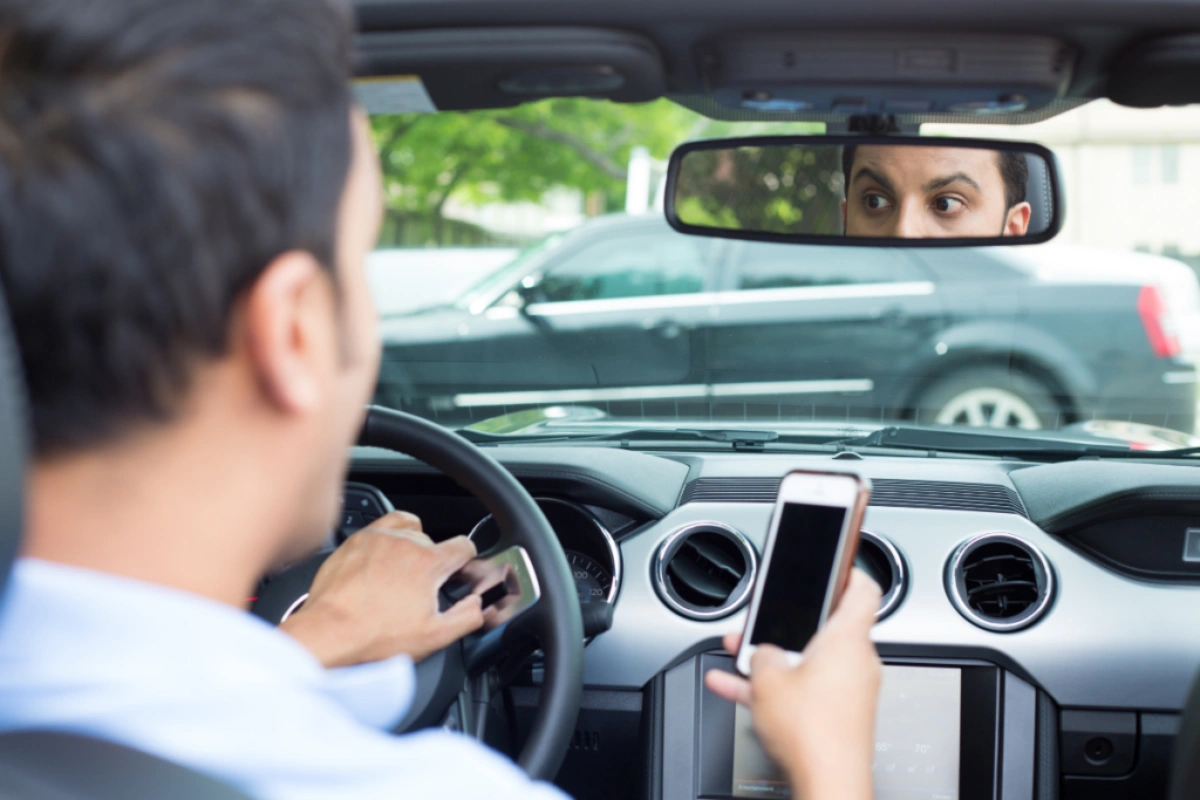Distracted driving happens when a driver’s attention shifts away from the road. It can be visual (taking your eyes off the road), manual (removing your hands from the wheel), or cognitive (letting your mind wander).
This behavior is more common than many of you realize—and it’s putting lives at risk.
According to the National Highway Traffic Safety Administration, distracted driving caused over 3,275 deaths in 2023. Everyone should know how common types of distractions while driving contribute to serious crashes every day.
The Three Main Types of Driver Distraction
Distracted driving comes in three primary forms, and each one can raise the risk of a crash:
- Visual distractions: These happen when you take your eyes off the road. Looking at a phone, reading a message, or glancing at a GPS means we’re not watching traffic, even for a second.
- Manual distractions: These involve removing your hands from the wheel. Eating, adjusting controls, or reaching for something can slow down your reaction time.
- Cognitive distractions: These pull our minds away from driving. Daydreaming, feeling stressed, or talking to someone in the car can reduce focus and slow decision-making.
Real-World Examples of Common Distractions
Texting is the ultimate trifecta: eyes down, hands off, and mind elsewhere. But “quick” distractions add up too. A burger drips ketchup? That’s a visual and manual distraction. Even voice-activated tech isn’t harmless—programming GPS steals mental focus. Then there’s road rage or crying kids, hijacking attention faster than a phone notification.
Rarely does one distraction act alone. Most crashes happen when drivers think they’re “just” adjusting the radio while stressed, while halfway listening to a podcast. Layers of distraction are layers of risk.
Why Distracted Driving Is Especially Dangerous
Distraction delay’s reaction time by precious milliseconds—enough to miss a red light or a braking car. Studies show distracted drivers react more slowly than those at .08 BAC (NHTSA). Why? Your brain can’t truly multitask. Switching between driving and texting means neither gets full attention. Even a 5-second glance at a text at 55 mph is like driving blindfolded for an entire football field. And unlike drunk driving, distractions tempt us constantly. “I’m just checking…” is how 3,000+ lives were lost in 2021 alone.
The Data Behind the Risk
The numbers don’t lie: Distraction plays a role in 8% of fatal crashes and 15% of injury crashes (CDC). Teens are worst-hit—39% admit texting while driving—but no age group is immune. Every day, 9 Americans die in distraction-related wrecks.
And these are just reported cases; real numbers are likely higher. Unlike weather or mechanical failures, 100% of these crashes were preventable. A single text isn’t worth a lifetime of guilt or cut short.
A Persistent and Evolving Threat on Modern Roads
Distracted driving isn’t fading; it’s adapting. Smarter phones, louder notifications, and busier lives pile on distractions faster than laws can curb them. Yet the solution is simple: Eyes up, hands ready, mind present. Until then, this preventable epidemic will keep writing obituaries—one “glance” at a time.




